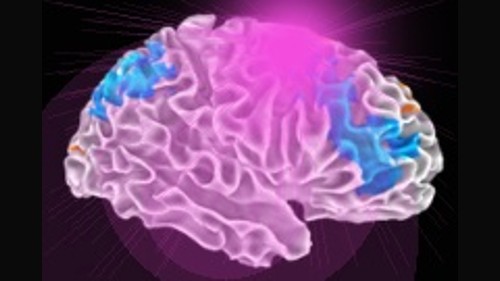Auditory Processing: Hearing but not Hearing

I never really began to fully comprehend auditory processing issues until one day I was sitting in a very busy coffee shop with my son. High school students were lined up, dishes were clanging, buzzers were going and mixed conversations were overheard. My son, who was about 10 at the time, only remarked about the song playing way off in the background. This was a song, I literally strained to hear. Yet for him, it was as distinguishable as the rest of the coffee shop’s noises. No wonder verbal instructions and noisy classrooms were a challenge for him, because if he couldn’t distinguish the dominant noise and drown out the others, how could he pay attention?
People with auditory processing disorder can have a hard time hearing small sound differences in words. For example one could say, “ Look at the cows over there,” and yet they may hear, “Look at the owls on the stairs.” Sounds may be reversed or jumbled such as the classic ‘pasghettie’ instead of spaghetti. Multiple sounds may be heard as one sound. All of this leads to difficulty with phonemic awareness, a skill necessary for traditional reading methods. Not all dyslexics have auditory discrimination problems and symptoms can vary from mild to extreme, but other signs can include difficulty following a sequence of instructions, a weak auditory memory and weak comprehension of something just heard leading to the misunderstanding of what others said.
Basically, they will pass a traditional hearing test but with auditory processing, their brain isn’t getting what the ears are hearing, but what it thinks they are hearing. Sounds familiar? It’s a form of disorientation. Instead of having confusion over letters, there is confusion with sounds. This confusion makes processing difficult, makes it hard to think while listening or phonetically decoding and leads to slowness in interacting things heard with things seen.

In addition, because the listening and balance systems are highly integrated, (they share the same vestibular-cochlear apparatus) those who struggle with APD often have difficulty with co-ordination. The vestibular system is a system of balance and motion located in the inner ear.
This part of the brain uses both sides of the body to support the child’s balance which allows one to know their place in space. Good balance helps one sit still, concentrate, and control the eye movements necessary for reading, writing, and coordination.
Auditory issues, like other learning and attention issues, can affect a child’s everyday life. For example, does the child mishear sounds and words? Maybe you find the child is easily overwhelmed in noisy environments and copes better in quieter settings? Does your child have trouble with spelling or phonics? Maybe conversations or verbal directions are hard to follow? Separate testing from a typical hearing test is needed to confirm the suspicions.
Therapy and technological equipment is available, but I personally found the techniques behind the Davis Dyslexia Correction Method very helpful. We had our son retested around 1 to 2 years following his program and he was in the “normal” range. This followed his mastering the sight words and daily implementation of the orientation exercises. I am not sure if I had APD, but I did have problems following lectures and remembering what was said without writing notes. Now, I frequently listen to podcasts and the odd auditory book while driving and seem to retain the important parts, and of course, I was able to do that following a Davis Dyslexia Correction Program.
The Davis Program tackles the cause of the learning struggles and gets to the root of the problem, allowing the participant to discover their confusions and correct them. With auditory processing, the orientation procedure combined with introducing symbols that are responsible for the challenges has the ability to solve the problem. It has the potential, (depending upon the dedication to the follow-up) to permit the client to re-enter the workplace or school free from technology, accommodations, and coping strategies.









